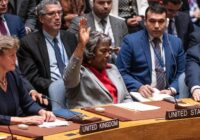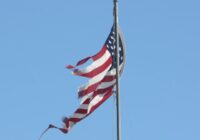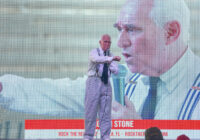Both the Fed and Congress may be able to overcome short-term volatility.
As the US Federal Reserve (Fed) becomes more inclined to raising the Fed funds rate (FFR) according to recent speeches from the Federal Open Market Committee, it should consider shrinking its balance sheet of $4.5 trillion before considering raising the FFR. The reason stems from the perverse impact of massive excess reserves at the Fed on small business lending. The evidence lies in how Americans struggle to boost workforce participation and to create new jobs, of which two-thirds have historically come from small businesses. Naturally, wage growth, and thus core inflation, struggles to reach the Fed’s core inflation target of 2%.
The Reason
So, what is the culprit behind the lack of lending to small businesses?
Some experts, during their testimony to the US Congress in May, attributed the lack of small business lending to interest on excess reserves (IOER), which is a new measure since 2008 that helps the Fed to keep its member banks content by defraying the cost of depositing extra reserves at the Fed. Little did most people realize that such small but risk-free relief would incentivize banks to stop lending to small businesses, which historically received three-quarters of their credit from depository institutions.
Large corporations that usually borrow at long-term rates benefitted from the Fed’s purchase of long-term Treasuries. Real estate owners similarly benefitted from the Fed’s purchase of agency Mortgage-Backed Securities. In fact, most risky asset owners benefitted as the hunger for yield continues.
However, such widespread asset inflation only leads to spectacular bubbles that inevitably burst. And without physical goods and services inflation, due to lack of lending and low workforce participation, the Fed’s expansionary monetary policies may keep asset bubbles longer than their natural course. The US, as the new oil swing producer since 2008, may also keep inflation and thus the FFR in check.
So if IOER is so problematic for lending, inflation and interest rate normalization, why can’t it be repealed?
Herein lies the second reason behind introducing the IOER in 2008, which is to serve as an upper bound for the FFR. Before the 2008 crisis, the FFR was set by the supply and demand of reserves that banks held at the Fed. But with the explosion of excess reserves that were not lent out after three rounds of quantitative easing (QE), the FFR ceiling had to be set by the Fed through the IOER, as nowhere else is the depository institution as safe as the Fed.
In a slight twist, the IOER could not serve as the floor to FFR as originally intended by the Fed, because money market funds and government sponsored enterprises such as Fannie and Freddy—even though they had access to Fed funds—were not given the statutory right to receive interest on reserves. Therefore, in order to incentivize non-banks to not deposit at institutions that pay way below the FFR, the Fed opened up the Overnight Reverse Repo (ONRRP) transaction to them and a floor was born.
The most comprehensive way to stop widespread asset bubbles is to normalize the FFR, which depends on higher core inflation, which depends on wage inflation and lending to small businesses, which depends on the repeal of IOER, which depends on the shrinking of the Fed’s balance sheet.
As the Fed has rightfully warned, unwinding its massive holding of long-term bonds may cause undue volatility in long-term rates and markets at large. Therefore, as a counter measure, the Fed may have to relax the FFR before raising it. Going forward by taking a step back first will also lower IOER paid to banks and thus increase banks’ incentive to lend. IOER can be eliminated completely as excess reserves return to normal levels, and supply and demand on reserves can once again set the Fed Funds Rate.
In practice, long-term rates may not rise unchecked, as private sectors, such as pensions and insurers that are still hungry for yield, can buy securities unwound from the Fed’s large balance sheet.
Safe haven demands due to global aging and anemic productivity growth may also keep US long-term rates low enough to weather the Fed’s normalization of monetary policy implementation. The Fed’s member banks will be able to escape from a flattish yield curve, while shadow banks such as pensions and insurers will finally be able to overcome the persistent low yield environment. With adequate credit access, small businesses will once again be at the forefront of new job creation, while the popping of asset bubbles from QE unwinding can finally bring back the normal business cycle.
 Subscribe to Fair Observer for $10 a month and we will gift you our e-publications and invite you to inspiring events.
Subscribe to Fair Observer for $10 a month and we will gift you our e-publications and invite you to inspiring events.
On the surface, a strong counterargument for not shrinking the balance sheet is for the Fed to monetize debt for fiscal spending, as most of the interest income paid by the US Treasury on Treasury bonds that the Fed received through QE are passed back to the US Treasury, aside from IOER paid to banks.
US Elections
Unfortunately, because both chambers of Congress were controlled by the conservative Republicans in the last four years, and any new fiscal policy bills passed in Congress may be vetoed by the incumbent Democrat president, fiscal spending has been lacking despite low long-term rates.
Therefore, if the Democrats can take the Senate, as Republicans have a strong hold in the House, along with the presidency in the November elections as current odds deem possible, then the higher likelihood of significant fiscal spending may actually provide an economic cushion for the Fed to unwind. Hence, it would be beneficial in the long run for the Fed to announce in 2017 a slow unwinding of the Fed’s balance sheet through either outright selling or not reinvesting matured securities.
Both the Fed, through lowering the FFR and relaxing certain regulatory policies on bank capital and liquidity, and Congress, through fiscal spending, may be able to overcome short-term volatility as they coordinate on eliminating IOER and thus empower the largest contributor to new jobs: small businesses.
The views expressed in this article are the author’s own and do not necessarily reflect Fair Observer’s editorial policy.
Photo Credit: Traveler1116
Support Fair Observer
We rely on your support for our independence, diversity and quality.
For more than 10 years, Fair Observer has been free, fair and independent. No billionaire owns us, no advertisers control us. We are a reader-supported nonprofit. Unlike many other publications, we keep our content free for readers regardless of where they live or whether they can afford to pay. We have no paywalls and no ads.
In the post-truth era of fake news, echo chambers and filter bubbles, we publish a plurality of perspectives from around the world. Anyone can publish with us, but everyone goes through a rigorous editorial process. So, you get fact-checked, well-reasoned content instead of noise.
We publish 2,500+ voices from 90+ countries. We also conduct education and training programs
on subjects ranging from digital media and journalism to writing and critical thinking. This
doesn’t come cheap. Servers, editors, trainers and web developers cost
money.
Please consider supporting us on a regular basis as a recurring donor or a
sustaining member.
Will you support FO’s journalism?
We rely on your support for our independence, diversity and quality.






